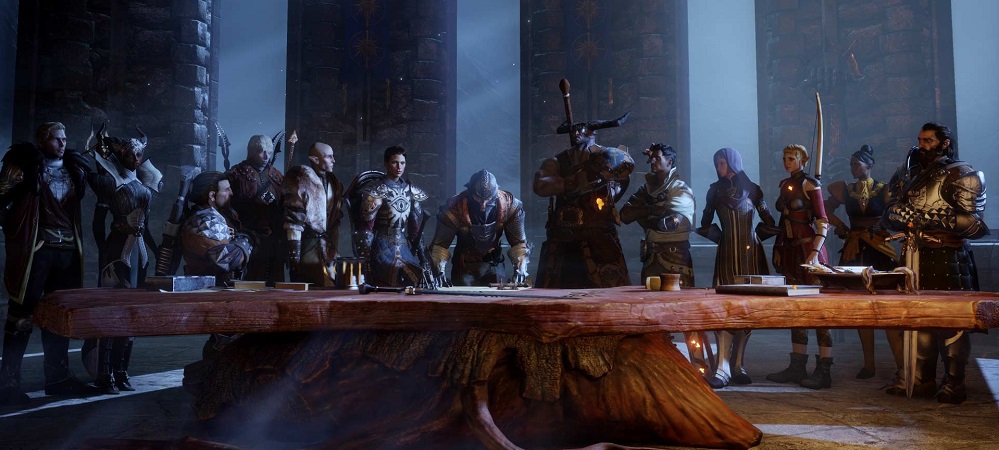The rest of the game looked damn fine, too
Fantasy games have some of my favorite settings in all of videogames. Forests, mountains, chasms, rivers — they all have a serenity and majesty about them that wonderfully adds to the sense of scale. It shouldn’t surprise me that Dragon Age: Inquisition is poised to be incredibly huge and make nice use of the locations. At the beginning of a 30-minute presentation, I couldn’t help but be amazed anyway.
The first thing I noticed in the hands-off demo was simply how big everything was. The open area that we started in seemed to stretch on forever — mountains book-ending the sides, with a ton of detail in between, thanks to the use of the Frostbite 3 engine. Inquisition‘s executive producer made sure to make a point that everything we could see could be traveled to.
I wasn’t out of my mind for thinking that it looked big. That area alone was larger than the entire play space of Dragon Age: Origins. Inquisition will be the biggest Dragon Age game to date. But, all that area isn’t going to waste. Every location in Inquisition is part of a larger story.

Dragon Age: Inquisition centers around the on-going war between the mages and templars. The presenter emphatically stated several times throughout the demo that this was our goal. That might be what’s on BioWare’s mind, but honestly, it seems like the more important objective in Inquisition is simply keeping the world from tearing itself apart.
All across the land are breaches that need to be repaired, which is the protagonist’s duty as the Inquisitor leading the Inquisition. There’s plenty of room for customization here as four races and nine specializations (as well as choice of gender) are offered. If Inquisition‘s going to ask the player to make decisions to affect the outcome of the game, it’s a good thing that the option to play several different ways is represented.
Not that the Inquisitor would attempt this on his/her own, however. Inquisition has many playable characters that are leaders in their own right, effectively making the player a leader of leaders. These characters react based on choices made throughout the game. For instance, in the demo, we sent one to Redcliffe Castle where she was captured and tortured. We eventually freed her, but the presenter remarked that it’ll have a long-term effect on our relationship moving forward.

It’s probably for the best that relationships be tended to as carefully as possible, because you’ll anyone and everyone on your side in the thick of battle. The combat system has been sort of reworked for Inquisition to compromise between Origins‘ and Dragon Age 2‘s. Now, the player is able to pause time entirely to take an overhead tactical approach, or get into the fray themselves while switching characters on-the-fly.
This was displayed flawlessly in a battle against a ferocious Fereldan Frostback dragon. With different reticules aiming for specific parts of the dragon, the team chipped away. This is where Focus was shown off — a shared resource that slows down time for everyone but our party. After inflicting some major damage, the dragon was wounded enough that we could move in and deliver the coup de grâce.
By the time the 30-minute presentation was up, I realized that we had barely even scratched the surface of what Dragon Age: Inquisition will have to offer. With a massive play space that changes based on in-game decisions and actions, dynamic RPG offerings, and an entire story to tell, Inquisition needs several hours to express what it’s all about — not just a thirty minutes. That being said, a half hour was sufficient time to impress; I can’t imagine more time wouldn’t just build on that.


